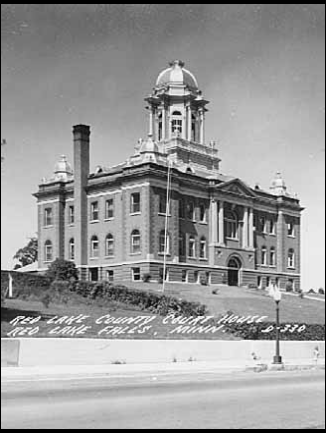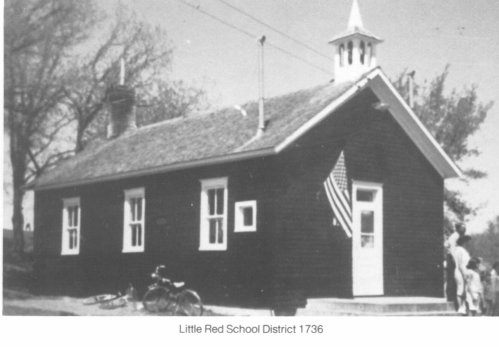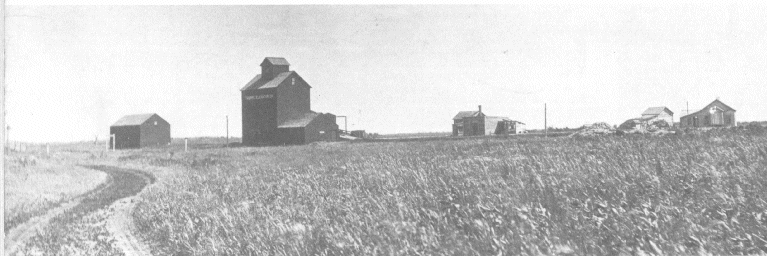 |
|
|
HUOT
The area of Louisville Township has a great deal of historical interest dating back to the 1830's when ox carts forded the Red Lake River transporting goods and furs from the Red River Colony and Pembina to St. Paul and beyond.It was here that the Old Crossing Treaty of 1863 ceded 11 million acres of fertile land to the United States Government.(See Treaty story)
Huot
|
|
On January 7, 1879, commissioners of Polk County fixed the boundaries of the new Louisville Township, the area named for Louis Huot, an early settler who had founded the Village of Huot on the banks of the Red Lake River.From its beginning, Louisville Township with Huot was a thriving community. There was the St. Aloysius Catholic Church.J. R. Huot owned the general store, Charley Huot was the local blacksmith, and Peter LaChance the creamery operator. In the early 1880's, someone was authorized to build and operate a ferry at the mouth of the Black river and charge a fee for moving wagons and people across the water by use of a winch.The bridge across the Red Lake River at Huot was not built until the early 1900's and served until 1966when high waters and ice tore the rotted timbers from their moorings and it collapsed.In 1983 the present new bridge was finally built one mile down stream on Cnty. Rd. #3 |

Robert Larson, former township officer, wrote of the Flu Epidemic in Louisville. One of the duties of the Town Clerk until about 1940 was to register all births and deaths in the township records - and the epidemics happened all too often. Typhoid fever in 1909 and scarlet fever caused several deaths. The worst epidemic was the influenza epidemic in 1918. The Lizotte family lost four sons in just a few days. Wilfred Brunelle and John Hanson were two of the men who volunteered to dig the graves at the Huot Cemetery, and the question was “Who died now?” There were no burial services as all public gatherings were cancelled. The Priest sent his blessings from his home.
Dorothy

In the late 1870’s, brothers Reme and Louis Hance and their families came from Austin, Minnesota, to homestead on the rich farmland north of Huot. They settled on adjoining quarter sections of land and built one cabin for the two families. Half of the cabin was on Reme’s land and the other half on Louis’ land, thus meeting regulations set forth by the Homestead Act
When the Northern Pacific Railroad built tracks through Louisville in 1887, the Village of Dorothy six miles north of Huot sprung up needing a grain elevator near those tracks. In 1891, James Hance, son of Louis, married Agnes Benoit. They farmed near Dorothy. A few years later, he quit farming to operate the grain elevator at Perrault Station for five years, then to Red Lake Falls to manage that elevator. In 1918, the Hance family moved to Dorothy where he took over the elevator, built up a large mercantile business, established a post office in Dorothy, and organized the Hance Oil Company. He was instrumental in founding the St. Dorothy’s Catholic Church in 1919.
Amateur theatricals were popular in Dorothy drawing spectators from a wide area. M. W. Drees in 1921 announced the formation of a company of artists who would be known as the Majestic Entertainers. Mr. Drees would take the lead in a thrilling farce comedy, “The Troublesome Book Peddler”, and a reading, “The Face on the Barroom Floor”. The Dorothy Dramatic Club continued for well over twenty years. “Arizona Gold, or the Dead Rancher’s Secret”, a thrilling melodrama was staged in 1941, Irving Beyer, Roma St.Ives, Lillian Huot, L. L. Hance, W. W. Grees, Sylvia Paquin and Jean Beyer taking parts.
St. Dorothy’s Parish
The roots of St. Dorothy’s Parish in Dorothy go back to Louisville where Father Pierre Champagne offered the first mass in the home of Louis Huot as early as 1880. Rev. Eli Lemire of St. Joseph's Parish in Red Lake Falls in 1918 started the task of organizing a new parish for Dorothy and began raising the necessary funds to build the structure. St. Dorothy’s parish had about 65 members initially. Father A. P. Lamy came as the first pastor and began to build the church in 1919. He also attended the St. Aloysius Church in Huot as a missionary, but soon asked the residents to attend mass in Dorothy.
Recent pastors were Father Victor Cardin and succeeded by his brother, Father Paul Cardin in 1942. Father J. Warren Regnier, Father Arthur Lemire and Father Gerald Foley in 1963 to 1975, succeeded by Father John O’Toole. St. Dorothy’s became a mission parish and closed in 2001.
PROHIBITION
On the 28th of February, 1916, a special election was held in Louisville Township to determine whether the sale of intoxicating liquor should be prohibited. voters cast 30 “yes” votes and 75 “no” votes which meant the township stayed “wet” and residents had voted to make it possible to sell intoxicating liquor. When the Volstad Act became law, Red Lake Falls was one of the last “wet” areas where liquor could be purchased.
Louisville Township never became “dry” with prohibition. There was always a demand for “moonshine”, the local liquor.
The Federal Agents (the “Feds” as they were called) would confiscate and destroy the local distilleries, but there always seemed to be some in operation to take care of the demand.
There were also the “rum runners” who would haul in liquor from a great distance. Robert Larson, in his History of Louisville Township, writes: I went along with a young neighbor to deliver a load to an East Grand Forks outlet for all the moonshine he could supply. This was very lucrative as he made more money on that one load than we made all year farming. However, the Feds eventually caught him and destroyed his distillery, and he spent some time in jail.